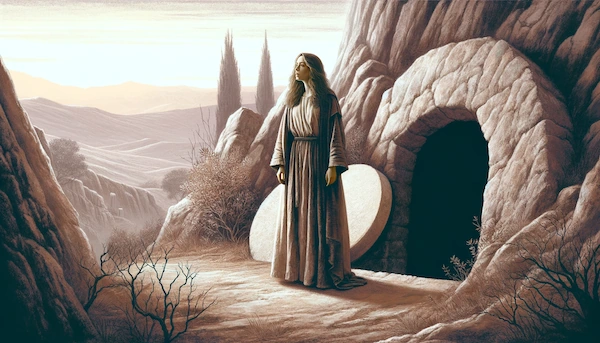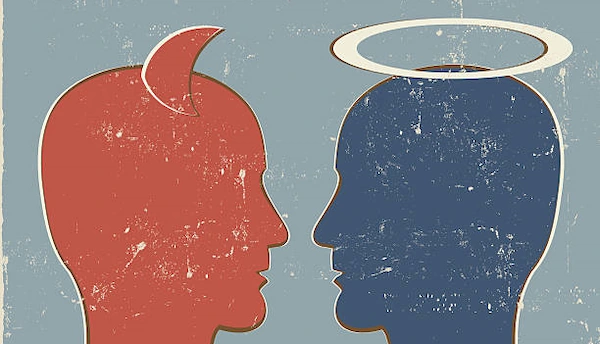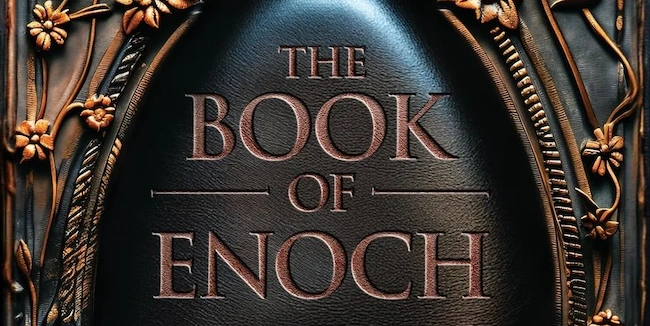
III. The Eastern Traditions
A. Hinduism: Foundations of Spirituality
The spiritual landscape of the East is profoundly illustrated through Hinduism, a tradition steeped in millennia of history, philosophy, and diverse practices. As one of the oldest known religions, Hinduism comprises a mosaic of beliefs shaped by various cultural and spiritual influences across time and geography. At its core lies the exploration of fundamental concepts such as Brahman, the ultimate, unchanging reality that transcends the physical world, and Atman, the individual self or soul that seeks to realize its inherent unity with Brahman.
Millennia of History and Literary Production
The Vedas, sacred texts composed between 1500 and 500 BCE, serve as the cornerstone of Hindu thought, addressing not only rituals and hymns but also philosophical queries about existence, consciousness, and the cosmos. Within the Veda’s expansive teachings, the subsequent texts known as the Upanishads deepen this inquiry, articulating profound explorations of reality, the self, and the interconnectedness of all entities. They emphasize that individual existence is not separate but intricately linked to the greater fabric of the universe, an idea that has persistently invited introspection and philosophical contemplation.
In Hindu spiritual practice, there is a significant focus on personal experience and inner realization. Methods such as yoga and meditation are not merely physical exercises but are regarded as vital pathways to self-discovery and eventual union with Brahman. The term “yoga” itself encompasses various disciplines, including Bhakti (devotion), Karma (action), Raja (royal or meditative), and Jnana (knowledge), each offering practitioners distinct approaches to understanding themselves and their relation to the cosmos.
Karma and Spiritual Liberation
A pivotal element of Hindu philosophy is the doctrine of karma, which elucidates the principles of cause and effect. It asserts that our actions have consequences that extend beyond this life, influencing our future reincarnations. This cyclical nature, known as samsara, encapsulates the journey of the soul through various lifetimes, each influenced by the moral and spiritual quality of previous actions. The ultimate aspiration within Hinduism is the pursuit of moksha, or liberation from this cycle, which represents the realization of the true self and the dissolution of the illusion of separateness. This pursuit fosters an intense spiritual yearning among practitioners to seek higher truths and an understanding of their place within the broader cosmic order.
Hinduism essentially encourages individuals to engage in a profound spiritual pilgrimage, underscoring the significance of personal experience, ethical conduct, and the pursuit of knowledge as indispensable elements of an authentic spiritual existence. Through its wide spectrum of teachings and practices, it offers a timeless framework for understanding not only the nature of existence, but also the potential for transformation that lies within each individual.
B. Buddhism: The Path to Enlightenment
Buddhism, founded in the 5th century BCE by Siddhartha Gautama—revered as the Buddha—emerged as a profound spiritual alternative to the prevailing religious systems of its time, particularly Hinduism. Where Hinduism traditionally emphasizes complex rituals, social hierarchies, and the caste system, Buddhism offers a direct and egalitarian approach to understanding human existence and alleviating suffering.
Suffering and Its Root Causes
At the heart of Buddhist philosophy are the Four Noble Truths, which serve as the foundation of its teachings. The first truth acknowledges the reality of suffering, known as “dukkha”. This encompasses not only the overt pains of life—sickness, aging, and death—but also the subtle dissatisfaction that pervades existence, stemming from the impermanence of all things. The second truth identifies the root of suffering, which lies in our desires and attachments, the yearning for what is fleeting or the resistance to change. The third truth offers hope: it asserts that cessation of suffering is attainable through the relinquishment of these attachments. Finally, the fourth truth outlines the noble path to this cessation, known as the “Eightfold Path”. This path is a comprehensive guide that integrates ethical conduct (sila), mental discipline (samadhi), and wisdom (prajna), each element interrelated and essential for spiritual awakening.
The Consistency of Change
Central to Buddhism is the understanding of “anicca” (impermanence) and “anatta” (non-self). These concepts challenge deep-seated beliefs about a permanent self or unchanging essence. Instead, Buddhism teaches that all phenomena are in a constant state of flux, and clinging to a fixed identity can lead to suffering. The “Dhammapada”, a revered collection of verses attributed to the Buddha, exemplifies this ideology, emphasizing that personal experience, mindfulness, and compassion are vital for navigating the path to enlightenment.
Meditating as a Way of Life
Meditation is perhaps the most significant practice within Buddhism, serving as a tool for deepening insight and cultivating wisdom. It allows practitioners to transcend ordinary thoughts and distractions, fostering a direct experience of reality. Through various forms of meditation—such as mindfulness (vipassana) and focused concentration (samatha)—individuals can develop a profound understanding of their mind’s nature, gaining clarity and tranquility that lead to spiritual liberation.
Essentially, Buddhism invites people to take a transformative journey, not just as a set of beliefs or doctrines, but as a lived experience aimed at recognizing the profound interconnectedness of all life and the liberation that arises from understanding the true nature of reality. It encourages a compassionate and mindful way of living, where awakening is not just a personal goal, but a shared path toward universal peace and harmony.
C. Taoism and Confucianism
In ancient China, two foundational spiritual traditions arose—Taoism and Confucianism—each offering unique perspectives on the nature of existence, personal conduct, and the cosmos. Their interplay reflects the complexity of Chinese thought and the moral and philosophical inquiries that have shaped its culture over millennia.
Balancing Seemingly Opposing Forces
Taoism, attributed to the sage Laozi, revolves around the concept of the “Tao”, often translated as “The Way”. This principle is not merely a philosophical abstraction; it embodies the essence of the natural order and the universe itself. In the “Tao Te Ching”, a seminal text attributed to Laozi, the teachings emphasize aligning oneself with the Tao through simplicity, spontaneity, and humility. Laozi’s poetry implores adherents to recognize the fluidity of life and encourages living in harmony with nature’s rhythms. The text reveals that true wisdom lies in understanding one’s place within the cosmos, transcending the material to grasp the deeper connections that bind all existence. Taoist practices often encompass meditation, tai chi, and various forms of qigong, which seek to cultivate an awareness of life’s inherent energies and the subtle forces that govern the universe.
Confucius’ Collective Spirituality
In contrast, Confucianism, founded by Confucius, prioritizes the cultivation of moral virtues and the establishment of social harmony. Confucian thought, as articulated in the “Analects”, underscores the significance of righteousness, ethical conduct, filial piety, and loyalty—values that are essential for fostering strong societal bonds. Confucius envisioned a well-ordered society in which individuals fulfill their roles with integrity and respect for others, thereby contributing to the common good. This ethical framework extends beyond personal moral development; it encompasses the responsibilities each person holds toward family, community, and state. Confucianism thus presents spirituality as a communal pursuit, where the cultivation of virtuous character becomes the foundation for a fulfilling life and societal prosperity.
Different but Complementary Traditions
While at first glance, Taoism and Confucianism may appear as opposing paradigms—the spontaneous embrace of the Tao versus the structured approach of moral governance—they are, in fact, intertwined aspects of a broader philosophical landscape. Each tradition enriches the other, highlighting different dimensions of the human experience. The fluidity of Taoist thought encourages introspection and adaptability, while Confucian teachings provide a clear ethical compass that guides individuals in their interactions with others.
Together, they offer a profound exploration of existence, inviting seekers to harmonize their inner lives with the outer world, balancing personal aspirations with communal responsibilities. In this delicate interplay lies the wisdom that has sustained these traditions through centuries, urging contemporary society to reflect on the enduring lessons of balance, virtue, and connectedness.
Part IV: The Rise of Monotheism – Judaism, Christianity and Islam >>
History of Spiritual Seeking – Index
1. Prehistory and Shamanic Traditions
2. Ancient Egyptian and Greek Civilizations
3. Eastern Traditions of Hinduism, Buddhism and Taoism
4. The Rise of Monotheism – Judaism, Christianity and Islam
5. The Enlightenment – Reason, Faith, and Scientific Inquiry
6. Contemporary Spirituality – New Age Movement and SBNR
7. Beyond Religions – An Approach Based on Inwardness
MINI-QUIZ: ARE YOU A TRUE TAOIST?
Answer all the questions and choose one response for each of them.
1. What is the primary focus of Taoist philosophy?
2. Which text is considered foundational to Taoist teachings?
3. How does Taoism view the concept of wu wei?
4. What does the Yin-Yang symbol represent in Taoism?
5. Who is traditionally credited as the founder of Taoism?
6. What role do deities play in traditional religious forms of Taoism?
The correct answers are the ones corresponding to the letter A. Count the number of times you chose answer A and check your profile below.
0: Taoism is not your thing!
1-2: You are a quite misinformed Taoist
3-4: You are an evolving Taoist
5-6: You are a true expert on Taoism!
📚 Academic Bibliography
🏛️ Prehistoric and Archaeological Sources
Solecki, Ralph S. Shanidar: The First Flower People. Knopf, 1971.
Clottes, Jean, and David Lewis-Williams. The Shamans of Prehistory: Trance and Magic in the Painted Caves. Harry N. Abrams, 1998.
Leroi-Gourhan, André. Treasures of Prehistoric Art. Translated by Norbert Guterman. Harry N. Abrams, 1967.
Mithen, Steven. The Prehistory of the Mind: The Cognitive Origins of Art, Religion, and Science. Thames & Hudson, 1996.
Lewis-Williams, David. The Mind in the Cave: Consciousness and the Origins of Art. Thames & Hudson, 2002.
🌍 Shamanism and Indigenous Spirituality
Eliade, Mircea. Shamanism: Archaic Techniques of Ecstasy. Translated by Willard R. Trask. Princeton University Press, 1964.
Harner, Michael. The Way of the Shaman. 3rd edition. HarperOne, 1990.
Jung, Carl Gustav. Memories, Dreams, Reflections. Translated by Richard and Clara Winston. Vintage Books, 1989.
Campbell, Joseph. The Masks of God: Primitive Mythology. Viking Press, 1959.
Halifax, Joan. Shamanic Voices: A Survey of Visionary Narratives. Dutton, 1979.
🏺 Ancient Mesopotamian and Egyptian Sources
Jacobsen, Thorkild. The Treasures of Darkness: A History of Mesopotamian Religion. Yale University Press, 1976.
George, Andrew R. The Babylonian Gilgamesh Epic: Introduction, Critical Edition and Cuneiform Texts. Oxford University Press, 2003.
Faulkner, Raymond O. The Ancient Egyptian Book of the Dead. Revised edition. University of Texas Press, 1972.
Hornung, Erik. Conceptions of God in Ancient Egypt: The One and the Many. Translated by John Baines. Cornell University Press, 1982.
Assmann, Jan. Death and Salvation in Ancient Egypt. Translated by David Lorton. Cornell University Press, 2005.
Frankfort, Henri. Ancient Egyptian Religion: An Interpretation. Columbia University Press, 1948.
🏛️ Greek Philosophy and Classical Foundations
Plato. The Republic. Translated by Benjamin Jowett. Dover Publications, 2000. [Originally c. 380 BCE]
Plato. Phaedo. Translated by David Gallop. Oxford University Press, 1993.
Plato. Apology. Translated by Hugh Tredennick. Penguin Classics, 1969.
Aristotle. Nicomachean Ethics. Translated by Terence Irwin. 2nd edition. Hackett Publishing, 1999.
Guthrie, W.K.C. A History of Greek Philosophy. 6 volumes. Cambridge University Press, 1962-1981.
Hadot, Pierre. Philosophy as a Way of Life: Spiritual Exercises from Socrates to Foucault. Translated by Michael Chase. University of Chicago Press, 1995.
🕉️ Hindu Philosophical and Spiritual Texts
Müller, Max. The Upanishads. Translated by Patrick Olivelle. Oxford University Press, 1996.
Radhakrishnan, Sarvepalli. Indian Philosophy. 2 volumes. Oxford University Press, 1923-1927.
Zaehner, R.C. Hinduism. 2nd edition. Oxford University Press, 1966.
Flood, Gavin. An Introduction to Hinduism. Cambridge University Press, 1996.
Sivananda, Swami. All About Hinduism. 8th edition. Divine Life Society, 1988.
Chapple, Christopher Key. Karma and Creativity. SUNY Press, 1986.
☸️ Buddhist Philosophy and Practice
Conze, Edward. Buddhist Thought in India: Three Phases of Buddhist Philosophy. University of Michigan Press, 1967.
Rahula, Walpola. What the Buddha Taught. Revised edition. Grove Press, 1974.
Gethin, Rupert. The Foundations of Buddhism. Oxford University Press, 1998.
Harvey, Peter. An Introduction to Buddhism: Teachings, History and Practices. 2nd edition. Cambridge University Press, 2013.
Bodhi, Bhikkhu. The Noble Eightfold Path: Way to the End of Suffering. Buddhist Publication Society, 1994.
Nyanaponika Thera. The Heart of Buddhist Meditation. Samuel Weiser, 1962.
☯️ Taoist and Confucian Traditions
Laozi. Tao Te Ching. Translated by Stephen Mitchell. Harper Perennial, 1988.
Zhuangzi. The Complete Works of Zhuangzi. Translated by Burton Watson. Columbia University Press, 2013.
Confucius. The Analects. Translated by Edward Slingerland. Hackett Publishing, 2003.
Kohn, Livia. Introducing Daoism. Routledge, 2009.
Yao, Xinzhong. An Introduction to Confucianism. Cambridge University Press, 2000.
Schipper, Kristofer. The Taoist Body. Translated by Karen C. Duval. University of California Press, 1993.
✡️ Jewish Tradition and Thought
Neusner, Jacob. The Way of Torah: An Introduction to Judaism. 7th edition. Wadsworth Publishing, 2003.
Heschel, Abraham Joshua. God in Search of Man: A Philosophy of Judaism. Farrar, Straus and Giroux, 1955.
Scholem, Gershom. Major Trends in Jewish Mysticism. Schocken Books, 1946.
Sacks, Jonathan. A Letter in the Scroll: Understanding Our Jewish Identity and Exploring the Legacy of the World’s Oldest Religion. Free Press, 2000.
Gillman, Neil. The Way Into Encountering God in Judaism. Jewish Lights Publishing, 2000.
✝️ Christian Spirituality and Theology
Brown, Raymond E. An Introduction to the New Testament. Doubleday, 1997.
McGrath, Alister E. Christian Theology: An Introduction. 6th edition. Wiley-Blackwell, 2016.
Merton, Thomas. Contemplative Prayer. Image Books, 1996.
Benedict of Nursia. The Rule of Saint Benedict. Translated by Timothy Fry. Liturgical Press, 1981.
Teresa of Avila. The Interior Castle. Translated by Kieran Kavanaugh. Paulist Press, 1979.
John of the Cross. Dark Night of the Soul. Translated by E. Allison Peers. Image Books, 1990.
☪️ Islamic Spirituality and Sufism
Nasr, Seyyed Hossein. Islamic Spirituality: Foundations. Crossroad Publishing, 1987.
Chittick, William C. Sufism: A Beginner’s Guide. Oneworld Publications, 2008.
Rumi, Jalal al-Din. The Essential Rumi. Translated by Coleman Barks. HarperOne, 1995.
Ibn Arabi. The Bezels of Wisdom. Translated by R.W.J. Austin. Paulist Press, 1980.
Al-Ghazali. The Revival of the Religious Sciences. Translated by T.J. Winter. Islamic Texts Society, 1995.
Ernst, Carl W. The Shambhala Guide to Sufism. Shambhala Publications, 1997.
🔬 Enlightenment and Scientific Revolution
Kant, Immanuel. Critique of Practical Reason. Translated by Mary Gregor. Cambridge University Press, 1997. [Originally published 1788]
Voltaire. Philosophical Letters. Translated by Ernest Dilworth. Bobbs-Merrill, 1961.
Locke, John. An Essay Concerning Human Understanding. Oxford University Press, 1975.
Gay, Peter. The Enlightenment: An Interpretation. 2 volumes. Knopf, 1966-1969.
Outram, Dorinda. The Enlightenment. 3rd edition. Cambridge University Press, 2013.
Porter, Roy. The Enlightenment. 2nd edition. Palgrave Macmillan, 2001.
🌹 Romanticism and Transcendentalism
Wordsworth, William. Lines Composed a Few Miles above Tintern Abbey. In Lyrical Ballads, 1798.
Emerson, Ralph Waldo. Self-Reliance and Other Essays. Dover Publications, 1993.
Thoreau, Henry David. Walden; or, Life in the Woods. Beacon Press, 1997. [Originally published 1854]
Richardson, Robert D. Emerson: The Mind on Fire. University of California Press, 1995.
Buell, Lawrence. The Environmental Imagination: Thoreau, Nature Writing, and the Formation of American Culture. Harvard University Press, 1995.
🧠 Psychology and Consciousness Studies
James, William. The Varieties of Religious Experience: A Study in Human Nature. Harvard University Press, 1985. [Originally published 1902]
Jung, Carl Gustav. The Archetypes and the Collective Unconscious. Translated by R.F.C. Hull. Princeton University Press, 1991.
Maslow, Abraham. Toward a Psychology of Being. 3rd edition. Wiley, 1999.
Grof, Stanislav. The Adventure of Self-Discovery. SUNY Press, 1988.
Wilber, Ken. The Spectrum of Consciousness. Quest Books, 1993.
Transpersonal Psychology. The Journal of Transpersonal Psychology. Association for Transpersonal Psychology, 1969-present.
🌟 New Age and Contemporary Spirituality
Chopra, Deepak. The Seven Spiritual Laws of Success. Amber-Allen Publishing, 1994.
Ferguson, Marilyn. The Aquarian Conspiracy: Personal and Social Transformation in Our Time. Jeremy P. Tarcher, 1980.
Capra, Fritjof. The Tao of Physics: An Exploration of the Parallels Between Modern Physics and Eastern Mysticism. 4th edition. Shambhala Publications, 2000.
Heelas, Paul. The New Age Movement: Religion, Culture and Society in the Age of Postmodernity. Blackwell Publishers, 1996.
Lynch, Gordon. The New Spirituality: An Introduction to Progressive Belief in the Twenty-first Century. I.B. Tauris, 2007.
Partridge, Christopher. The Re-Enchantment of the West: Alternative Spiritualities, Sacralization, Popular Culture, and Occulture. 2 volumes. T&T Clark, 2004-2005.
📖 Spiritual but Not Religious (SBNR)
Fuller, Robert C. Spiritual, but Not Religious: Understanding Unchurched America. Oxford University Press, 2001.
Roof, Wade Clark. Spiritual Marketplace: Baby Boomers and the Remaking of American Religion. Princeton University Press, 1999.
Mercadante, Linda A. Belief without Borders: Inside the Minds of the Spiritual but Not Religious. Oxford University Press, 2014.
Ammerman, Nancy T. “Religious Identities and Religious Institutions.” Handbook of the Sociology of Religion, edited by Michele Dillon, Cambridge University Press, 2003, pp. 207-224.
Beaman, Lori G. “The Myth of Pluralism, Diversity, and Vigor: The Constitutional Privilege of Protestantism in the United States and Canada.” Journal for the Scientific Study of Religion, vol. 42, no. 3, 2003, pp. 311-325.
🔍 Comparative Religion and Mysticism
Smart, Ninian. The World’s Religions. 2nd edition. Cambridge University Press, 1998.
Armstrong, Karen. A History of God: The 4000-Year Quest of Judaism, Christianity and Islam. Ballantine Books, 1993.
Huxley, Aldous. The Perennial Philosophy. Harper Perennial Modern Classics, 2009.
Otto, Rudolf. The Idea of the Holy. Translated by John W. Harvey. Oxford University Press, 1958.
Underhill, Evelyn. Mysticism: A Study in the Nature and Development of Spiritual Consciousness. Dover Publications, 2002.
Stace, Walter T. Mysticism and Philosophy. Macmillan, 1960.
⚖️ Religion, Spirituality and Social Change
Weber, Max. The Protestant Ethic and the Spirit of Capitalism. Translated by Talcott Parsons. Routledge, 1992.
Durkheim, Émile. The Elementary Forms of Religious Life. Translated by Karen E. Fields. Free Press, 1995.
Turner, Victor. The Ritual Process: Structure and Anti-Structure. University of Chicago Press, 1995.
Berger, Peter L. The Sacred Canopy: Elements of a Sociological Theory of Religion. Anchor Books, 1967.
Bellah, Robert N. Religion in Human Evolution: From the Paleolithic to the Axial Age. Harvard University Press, 2011.
🛠️ Methodological Notes
Theoretical Framework: This comprehensive analysis employs interdisciplinary methodologies drawing from religious studies, anthropology, psychology, philosophy, and historical analysis to examine the evolution of spiritual seeking from prehistoric times to the contemporary era.
Source Evaluation: Primary emphasis placed on peer-reviewed academic sources, canonical religious and philosophical texts, historical documents, and established works in comparative religion and consciousness studies. The analysis incorporates both descriptive historical accounts and interpretive theoretical frameworks.
Cultural Context: The study situates spiritual seeking within broader contexts of cultural evolution, social transformation, and intellectual development, recognizing the interconnected nature of spiritual movements and their historical circumstances.
Interdisciplinary Approach: Cross-cultural examination includes prehistoric archaeological evidence, ancient literary sources, classical philosophical texts, medieval mystical traditions, modern psychological research, and contemporary spiritual movements, providing a holistic view of humanity’s spiritual evolution.
Historical Periodization: The analysis follows a chronological progression from prehistoric shamanism through ancient civilizations, classical philosophy, major world religions, the Enlightenment, and contemporary spirituality, while acknowledging overlaps and continuities between periods.




